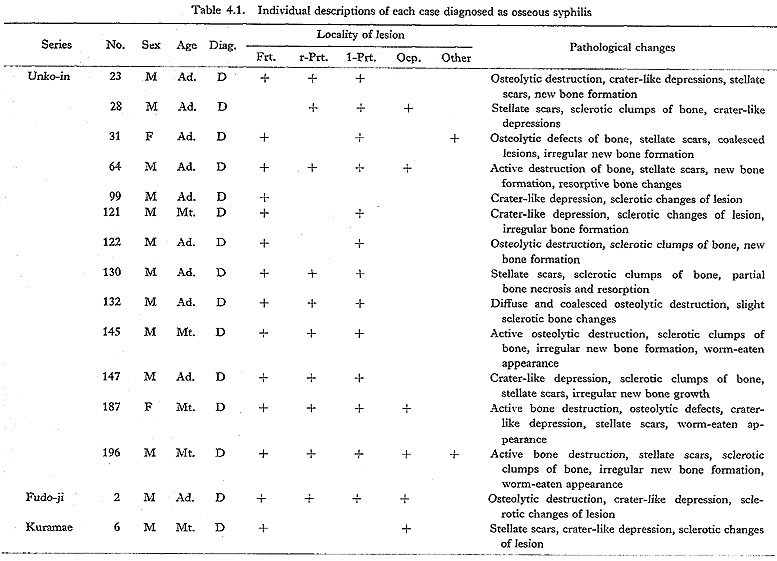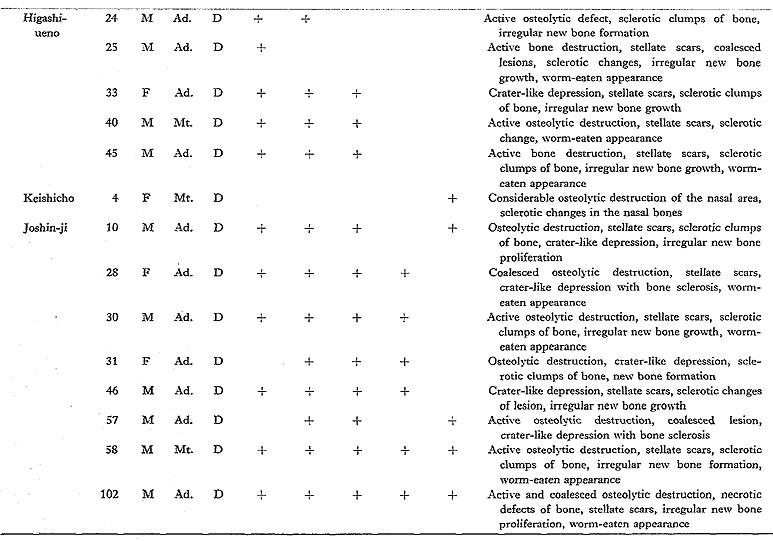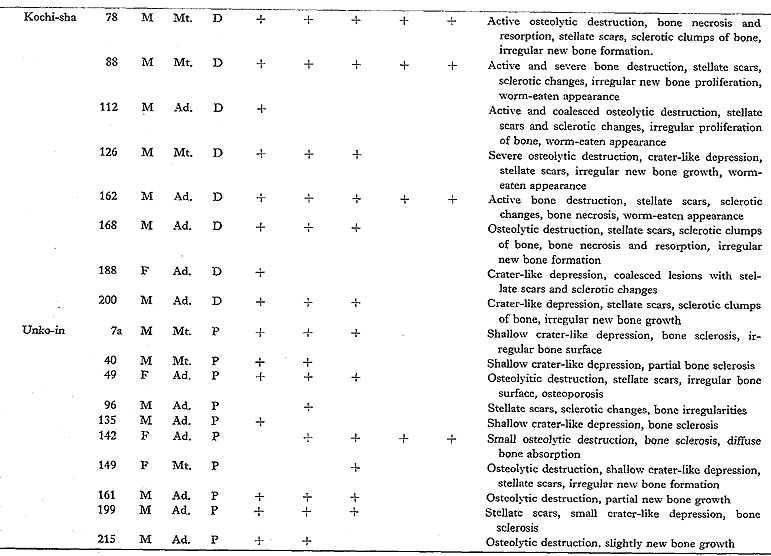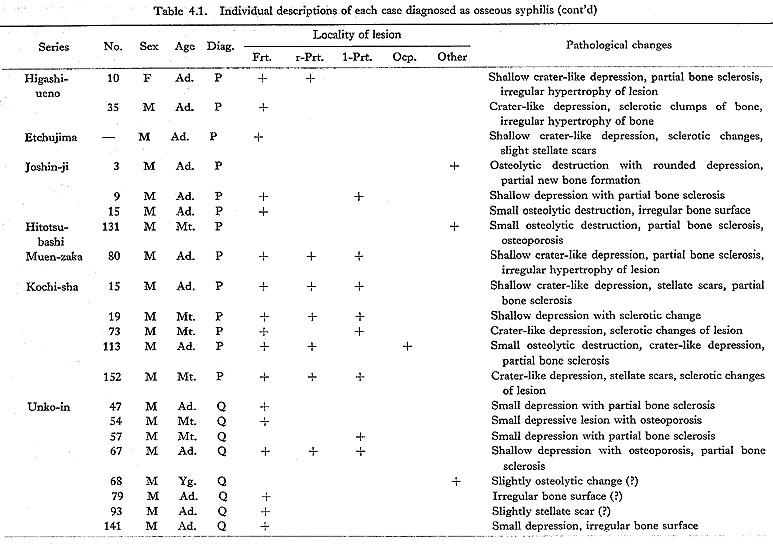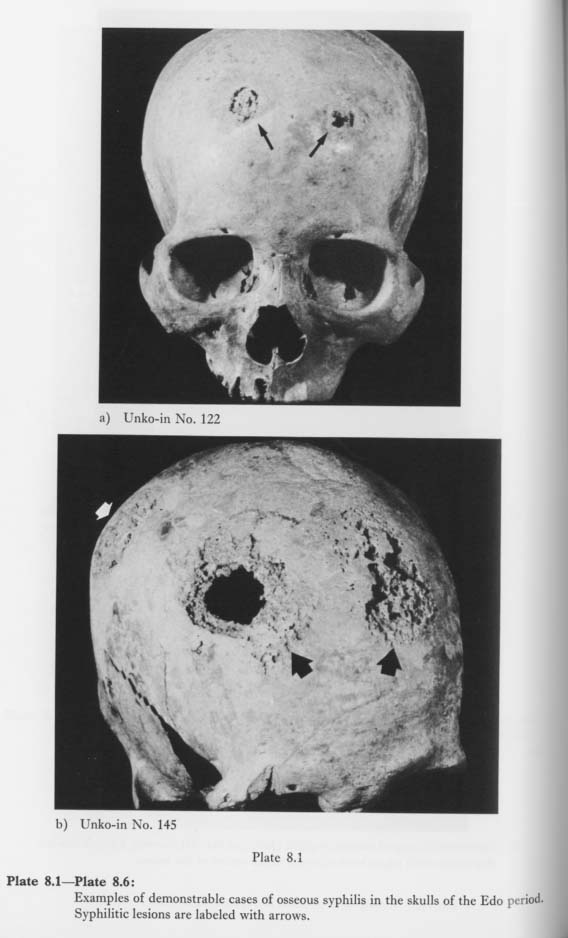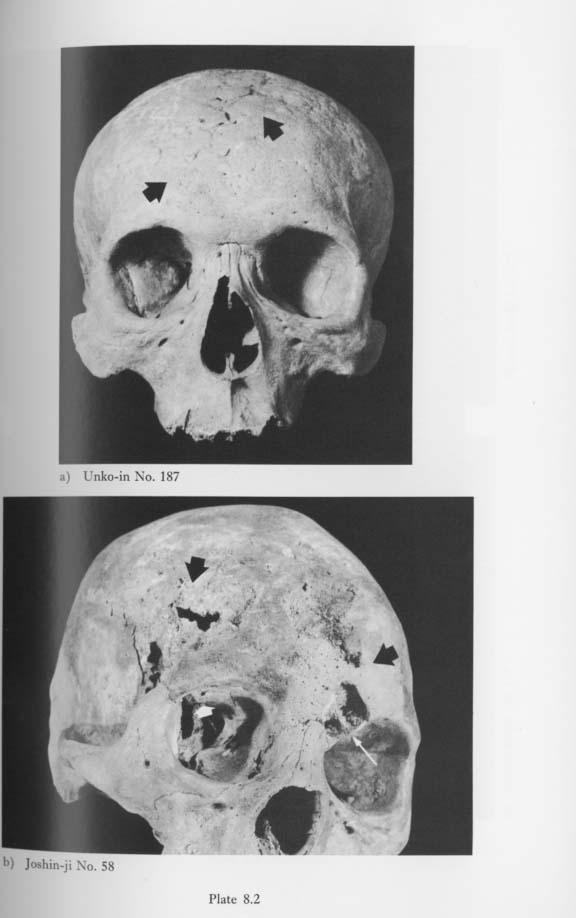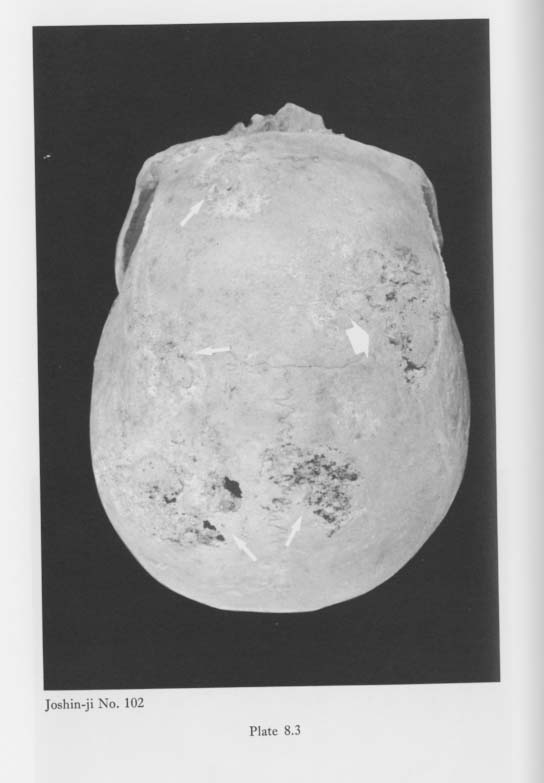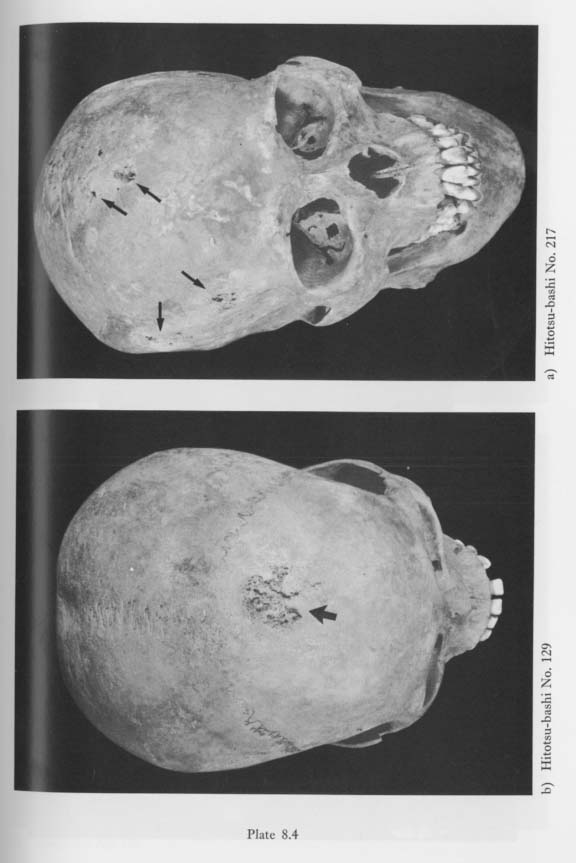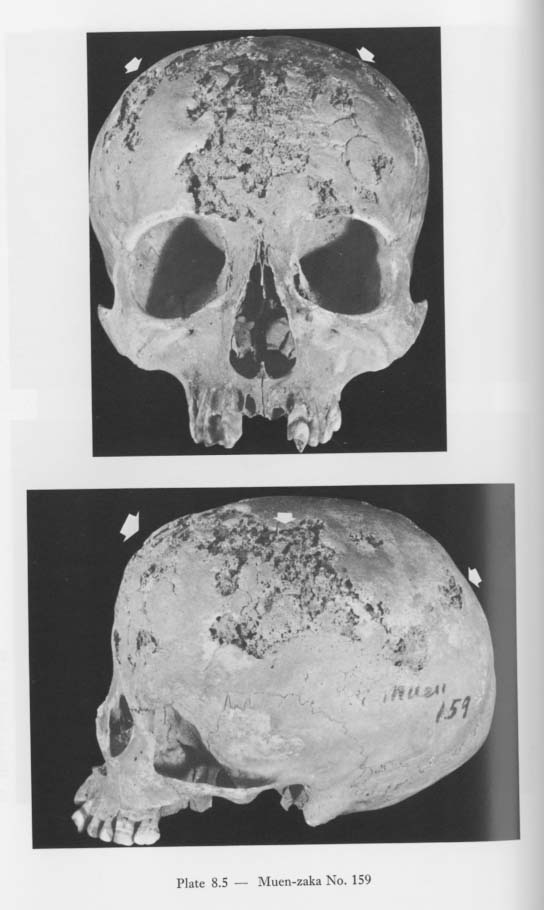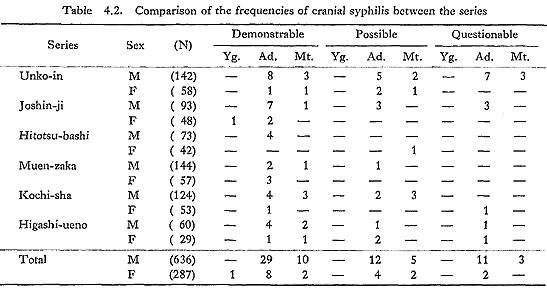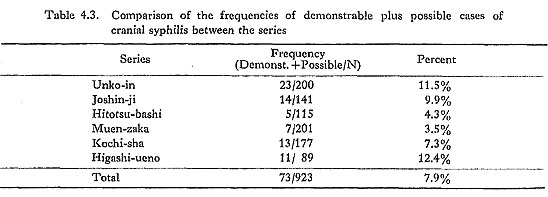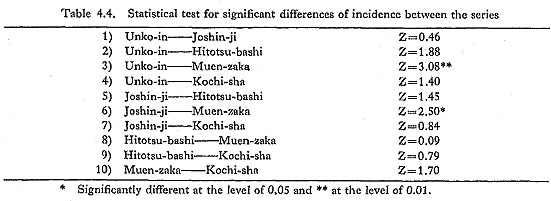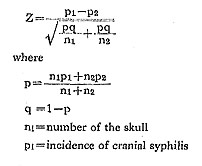CHAPTER 4
Results
|
In the present study, the diagnosis of osseous syphilis of the cranium of the Edo period was carried out by macroscopic observation or gross pathology. As a result, 89 of 923 adult skulls were diagnosed as osseous syphilis and classified into three cate-gories, i.e., there were 50 demonstrable cases, 23 possible cases and 16 questionable cases. Each case is described individually in detail in Table 4.1.
In the present paper, the incidence of osseous syphilis in the cranial series (excavated site), in both sexes, in all age groups, and in all locations of the syphilitic lesions in the skull are examined statistically. 1. Incidence of cranial syphilis among the series or excavated sitesThe incidence of cranial syphilis of each cranial series or excavated site, i.e., Unkoin, Joshin-ji, Hitotsu-bashi, Muen-zaka, Kochi-sha, and Higashi-ueno, are shown in Table 4.2. There were no considereable morphological differences of osseous syphilis in terms of gross pathology between the cranial series. In Table 4.3, except for the incidence of questionable cases, a comparison of the incidence of cranial syphilis among the series is shown.
Significant differences in the incidences among the series were tested statistically*, and the results of the statistical analysis are given in Table 4.4.
As shown in the table, there are statistically significant differences in two combina-tions of the three cranial series, i.e., the combination of Unko-in and Muen-zaka, and Joshin-ji and Muen-zaka. 2. Incidence of cranial syphilis in both sexesSex differences in the incidence of cranial syphilis during the Edo period were also examined. Using only the cases of demonstrable and possible osseous syphilis, the statistical tests for significant differences in both sexes were carried out under the same procedures followed in the previous section. The incidence of cranial syphilis for both sexes, except for questionable cases, are shown in Table 4.5. In Table 4.6, statistical tests for signifi-cant differences in the incidences in both sexes are given. As shown in Table 4.6, there were no significant differences in the incidence of cranial syphilis between males and females in any cranial series or on the average.
3.Incidence of cranial syphilis among age groupsThe materials were roughly classified into three age groups based upon osteological characteristics (see Chapter 2). The incidence of cranial syphilis for each age group, except for the qusetionable cases, is shown in Table 4.7. Statistical tests for significant differences in the incidence among the age groups were carried out in the manner applied in the preceding section. The test was, in fact, done only in one combination, between the highest incidence group (adult, 8.74%) and the lowest incidence group (young, 2.38%). As a result, the value of Z (1.15) shows no significant difference at a significance level of 0.05.
There were no recognizable morphological differences of osseous syphilis in terms of gross pathology between the age groups. 4.Incidence of syphilitic lesions in the locations of the craniumSyphilitic lesions are widely seen throughout the entire skull, as is generally known. It has been said that syphilitic lesions are frequently found in the frontal and parietal bones. Each pathological change of osseous syphilis is described individually in Table 4.1, and it can be said that, as a whole, there are no considerable differences in syphilitic lesions among the locations in the skull in terms of gross pathology, particularly among the demonstrable cases. The incidences were calculated in the cases of demonstrable plus possible osseous syphilis and in the cases of questionable osseous syphilis. The results are shown in Table 4.8.
|
|
* Significant differences were tested statistically by the following formula, with significance at the level of 0.05 and 0.01, (When the obtained value of cranial syphilis was less than five, the correction for continuity was done.) |
